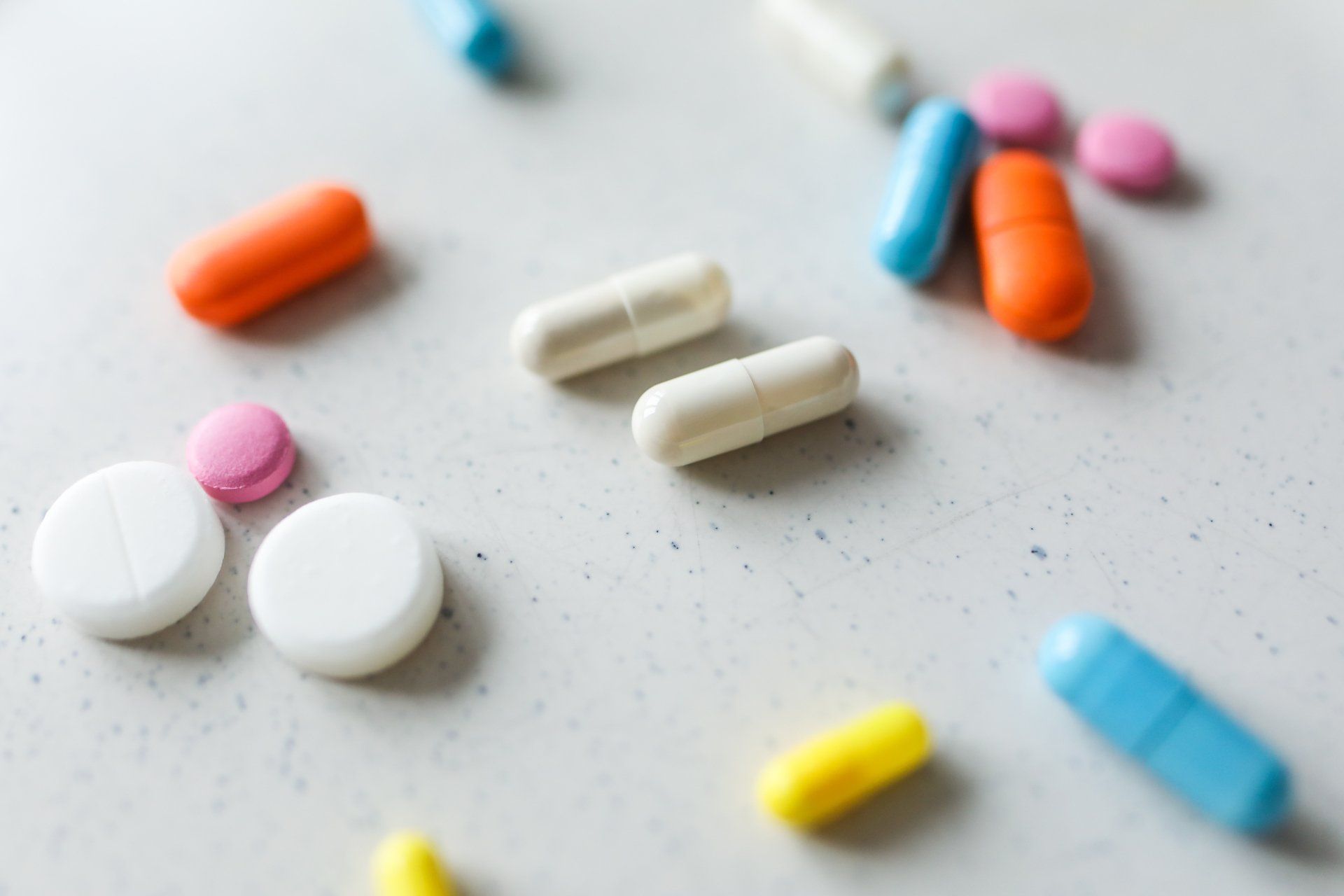You’re not like everyone else. And everyone else isn’t like you. You care about your health, workout, eat right, sleep the way you should, write a gratitude journal daily, and you love the career path you’ve chosen. Do you think it would make sense to compare your health data with people who struggle to fulfill any one of those areas by itself? Of course not! Unfortunately, that is the lens in which traditional bloodwork is viewed.
Because you exercise and eat high protein, you might have some markers of kidney health that come back “high,” and the only reason it comes back that way is because the reference range being used to compare your data is based on people who don’t exercise regularly, consume the low protein standard American diet, and are stressed to the max all the time. This is far from an apples-to-apples comparison. While yes, these people deserve our attention and support, their numbers should not be compared to yours. You, the fitness enthusiast, should be compared to other people like you.
Not only that, but you can use bloodwork to optimize both your health and athletic performance. Even something as cheap and ubiquitous as a CBC (complete blood count) can give you insight into B vitamin deficiencies, immune dysregulation, and anemia, all of which can have negative implications for your fitness journey.
Basics
Many physicians aren’t trained to look at blood work through the fitness enthusiast lens, which means you may be wrongfully diagnosed with “kidney disease” or “high cholesterol.” Fun fact, did you know higher HDL, the “good cholesterol”, isn’t always better? Or that “normal” fasting glucose, could be hiding some metabolic mayhem going on behind the scenes?
If you’ve had recent labs done, go ahead and pull them up, as it will help in understanding the nuances.
I can feel you getting antsy, so let’s start with the basics:
- Complete Blood Count (CBC)
This is used for the evaluation of your red blood cells (RBCs), hemoglobin, and hematocrit, which are all crucial for energy production. You also get a glimpse into your white blood cells, the “soldiers” of your immune system, which we can use to evaluate seasonal allergies, food sensitivities, and bacterial or viral infections.
- Comprehensive Metabolic Panel (CMP)
This tells us how well your liver and kidneys are functioning. High protein diets and resistance exercise (quite common in CrossFitters, power/olympic lifters, and in general fitness enthusiasts) can make some of these results look “bad”, when in fact everything is fine. Unless you visit a doctor who has experience interpreting lab results for athletes, you’ll probably be told that there’s something wrong with you.
You will also get a glucose (preferably fasting) marker. I’ve seen some CrossFitters who suffer from blood sugar-like symptoms (fatigue, cravings, brain fog) and have “normal” glucose that are 1 or 2 points away from being flagged as low. That tells me that glucose level isn’t “normal” for them.
- Lipid Panel
Cholesterol gets all the buzz for this one, but I like to pay special attention to Triglycerides. I like to see these within 50–90 mg/dL, but I’ve seen a fair amount of athletes with levels below 50 (myself included). I used to think this was due to being very metabolically healthy. However, this is not exactly the case. Levels lower than 50 could be due to undereating (common in CrossFit), or even autoimmune conditions.
The next one I want to debunk is HDL (High Density Lipoprotein). People think of it as the “good cholesterol” meaning they don’t care how high it is. I always thought that my HDL was super high because of how much exercise I did. Again, not exactly. I like to see levels within 40–70 mg/dL, anything outside that range could be due to inflammatory processes going on within the body.
Total cholesterol doesn’t even have a low end for the traditional ranges, which makes no sense to me. Try living a longtime and climbing mountains well into your 80s with a total cholesterol below 20.
- Iron Panel
Ferritin. This may seem counterintuitive, but Ferritin is a better measure of iron status than serum iron. This is because more of your body’s total iron is attached to a protein (Ferritin) rather than floating around as iron by itself. Too much iron floating by itself can be quite harmful.
TSH, free T4, and TPO antibodies are your best friends here. There are nearly 10 markers you could run to assess thyroid function, but honestly, I think that gives you more noise than anything. Small changes in free T4 will bring about large changes in TSH, almost as a “warning sign” of potential thyroid dysfunction down the line.
Why care about that warning sign? Outside of all the health ramifications of hypothyroidism (increased cardiovascular risk, constipation, etc.), there are many performance detriments associated (low muscle mass, decreased strength, decreased physical and mental stamina). Good luck doing an open workout if you had all that going on.
Sex Hormones
Everyone’s favorite.
- Male
Total Testosterone (T) gets much of the media attention, but free testosterone is likely more informative than total T, as free T is what’s actually available for our cells to use.
Then we have Sex hormone-binding globulin (SHBG), which sounds super sciency, until you realize the name tells you exactly what it does…a globulin (type of protein) that binds sex hormones. This is another marker helpful for evaluating low testosterone symptoms (mood swings, lack of concentration, low recovery from exercise). A high SHBG could be indicative of low free T, so if you’re looking to save money, you could pick between running free T or SHBG, along with a total T.
- Female
PREFERABLY DONE DURING DAYS 18–21 IN YOUR CYCLE.
Most of the estrogen in your body is called Estradiol (E2). Elevated levels could be a sign of metabolic dysfunction or environmental exposure to xenoestrogens (diet, plastics, personal care products). Total estrogens (E1–3) could be elevated with metabolic conditions such as PCOS.
Optimal levels of progesterone support oxidative stress from intense training (1).
DHEA could also be elevated in PCOS, or lower if under high amounts of physiological stress, namely intense exercise. This stress comes from the perspective that you’re struggling to recover from intense exercise. I found it interesting that a woman was banned from competing at The CrossFit Games this past year because of supplemental DHEA. DHEA (dehydroepiandrosterone) is naturally produced from cholesterol and is a precursor to both testosterone and estrogen. DHEA is on the banned substance list in CrossFit, which I don’t agree with, but that’s a topic for a future article.
If your FSH (follicle stimulating hormone) and LH (luteinizing hormone) numbers come back abnormal based on the time of your cycle, it’s time to speak with your physician.
Even women should have their total testosterone levels looked at. Low libido, low recovery from exercise, inability to put on muscle, and mood dysregulation could be a sign of low T.
Inflammatory Markers
Hs-CRP (High sensitivity C-Reactive Protein) is the most prominent. Unless you just had a competition or sold your soul doing MURPH, this number shouldn’t come back elevated. If it does, you’ve got some digging to do.
Creatine Kinase is most applicable to muscle breakdown. If you run this during an intense training cycle, this will likely come back elevated or high normal.
If uric acid is elevated it could be a sign of oxidative stress. Not to sound like a broken record, but if you run this during an intense training cycle, consequently it could come back elevated.
Homocysteine is a decent proxy for cardiovascular health and B vitamin deficiencies. I’ve seen this marker elevated for athletes due to B12 or folate inadequacies.
From a training standpoint, vitamin D helps in recovery via its anti-inflammatory role within the immune system, as well as its beneficial role on the sex hormones. I’m sure the majority of you are aware of the benefits of the sunshine vitamin.
If you’ve had blood work done in the past, your doctor was likely just checking to see if things were “out of range.” You need a doctor who understands that “normal” isn’t always normal, and that your symptoms matter just as much, if not more, than numbers on a piece of paper. If you’ve got all the signs and symptoms of low thyroid, but your thyroid came back normal, that’s probably not normal for you. We went very surface level with this stuff, and that’s because nuance requires a more thorough approach, preferably working with a doctor who knows how to interpret blood work within the context of your health and fitness goals.
If you’re looking for a physician who knows how to interpret blood work within the context of your fitness lifestyle, head on over to The HIVE Natural Health Center and check out our Functional Medicine page.
As always, Trust in Your Gut.
Disclaimer: The contents of this article are for educational purposes only, and are not intended to diagnose or treat any condition. Do not apply any of the information in this article without first speaking with your doctor.








